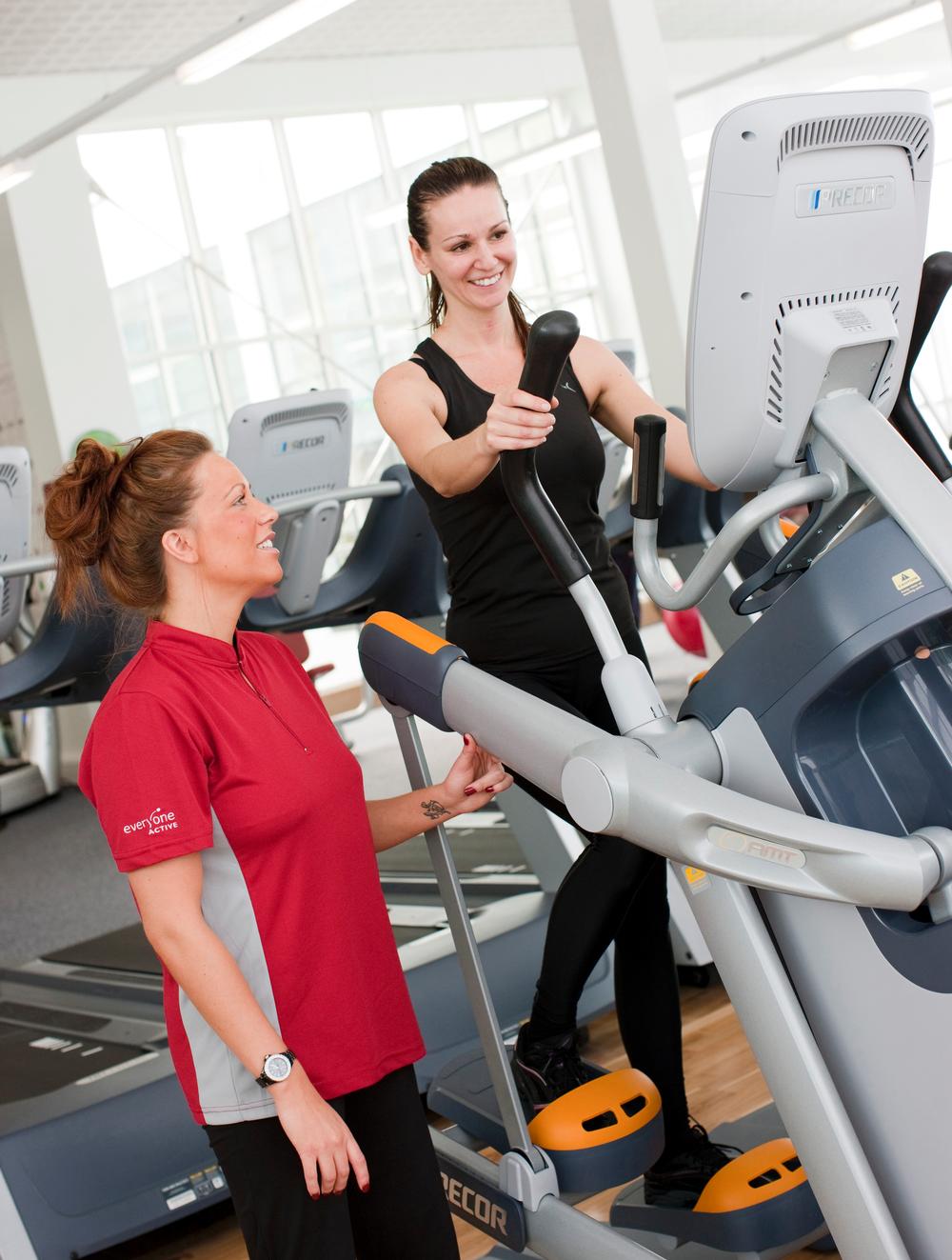The iconic scene in Jerry Maguire where Tom Cruise’s sports agent character is forced to yell “show me the money” to keep his demanding athletic client happy is perhaps extreme – one hopes finance directors of health clubs and leisure centres don’t have to be quite so loud or humbled to keep stakeholders, shareholders and members on board. But they are nevertheless accountable to clear a profit and invest wisely.
Here, two leading operators speak frankly about financial control and share key insights. Duncan Jefford, south-east regional director of public sector operator SLM, trading as Everyone Active, has spent all his working life immersed in the health and fitness business. He started out as a PT and worked his way up through the ranks, supplementing this hands-on knowledge by completing various financial courses with the Institute of Directors to ensure SLM’s continued success.
Nick Harding, group finance director for énergie, has a Plc background and has worked in the fitness and leisure industry with énergie for just over three years. His accountant’s perspective and experience outside the health and fitness market allow him to bring a highly professional approach to énergie and a fresh perspective to its business.
Setting the budget
Budgeting is the backbone of financial control: if you get that right, all other aspects of the financial jigsaw can fit together. Budgets are drawn up in different ways for different facilities.
Jefford favours using historical financial data as a platform on which to plan and build the next year: although zero-based budgets – which start with a blank sheet for the coming year – can give you a sense of a clean sweep and new broom, the reality is whatever has happened in the previous year will follow you into the next year.
But when it comes to the clean sheet that comes with building a brand new facility or winning a new contract, Jefford always starts with a three-year budget, recognising that it takes this length of time for a new facility to mature and go into profit.
He explains: “We have to take a longer-term view than many private sector operators, as a typical new contract will be managed over a 10- to 25-year term. However, in reality as the facility beds in and the membership matures, things are often very different from what you initially imagined, so we keep checking the budget remains suitable and alter it if necessary.”
Harding agrees that budgets must be flexible year to year, but likes to invest the time in setting a realistic annual budget that’s both stretching and achievable. “My finance team spends up to three months in advance of the budget year working with the operations team and franchisees. That means they’re fully involved and take responsibility for the budget,” he explains. “That three-month period can be quite intense as we go back and forth on what we think is realistic and achievable, but once the budget is agreed, the year ahead is then very clear, with specific KPIs in place to monitor performance against that budget.
“The biggest problem with budgets is that people see them as a paper exercise to put in the drawer and not look at again. Our managers and franchisees are all required to check their budget weekly and analyse performance daily.”
From the ground up
To enable the network to manage their budgets, Harding runs interactive training days specific to the health and fitness industry to ensure they understand the financial aspects. “Making accountancy understandable to your workforce is of huge importance, and helps control the finances from the ground up,” he explains.
While he believes every leisure facility or group should have a commercially-focused finance director to drive through the analysis and maintain an overview across the chain or group, he’s clear that ‘top-down’ budgets agreed at board level and handed down to local managers who have had no say in the matter rarely work: “Put simply, this practice doesn’t make people accountable. Anyone operating like this should take a step back, regroup and consider how they can turn this system on its head. It takes a little getting used to, but it really works.”
Jefford also requires his centre managers to take control of their budgets, and believes they pay more attention to finances as a result. “Each site has specific requirements and considerations, so a ‘one size fits all’ budget handed down from the management team will not be helpful,” he says. “Every centre manager must put in for what he or she thinks is needed. Once it’s agreed, they head up the implementation and I offer guidance where necessary.”
Profit & loss
Income streams differ between private and public facilities, with the latter generally having more emphasis on casual exercise lines. However, managing membership income and payroll are the key to a successful business across the board, says Jefford. Both sectors are also equally accountable to their stakeholders and members and both need to be profitable, including ‘not for profit’ clubs which are obliged to invest their profit into improving their business.
As with budgeting, Jefford hands his centre managers the responsibility for their profit and loss accounts. “Many businesses run scared of giving such responsibility to their centre managers, but my view is if you can’t trust them on this, you don’t have the right person in the job,” explains Jefford. “That doesn’t mean all our centre managers have accountancy skills. Instead we have bespoke software, so all they need to do is input sales and purchases accurately as they happen. The software will do the rest. Very quickly, a good centre manager will learn how to interpret the outcomes clearly and look to address any losses that are showing. Any problems, come to me and I’ll help, but they save a lot of my time by keeping an eye on the day-to-day income and expenditure of their centre.”
Real-time tracking
Gone are the days where month-end could bring unpleasant surprises, as there’s now plenty of software available to track income versus expenditure in real time.
Jefford requires a daily income check to ensure any discrepancies or negative trends are identified and acted on early. “As with any issues, the sooner you get to them, the easier they are to solve,” he explains.
To ensure smooth running of all énergie clubs, Harding is able to access what he calls ‘fingertip information’ minute-by-minute. “énergie has built a bespoke piece of software called ORA, which tracks membership sales across the network,” says Harding. “At any given time, I can check ORA and see how the clubs are performing against their sales targets, which are obviously linked back into the budgets.”
With controlling costs just as important as selling memberships – and harder to track, as there are so many different variants – Harding also invested in software to manage the purchase order system and keep a tight rein on expenditure.
Automated systems have certainly transformed the way profit and loss are managed, but as the familiar saying goes: ‘To err is human, but to really foul things up you need a computer.’ Health and fitness clubs therefore still need a finance director in place, supported by a commercially-focused finance team analysing and assessing progress – and staying alert to any oddities created by computer (or user) error.
Forecasting
Forecasting is incredibly important to ensure the long- and short-term viability of any business. This is never more so than in the fitness sector, with its cyclical income of membership subs coming in just once a month.
“People assume forecasting is long-term crystal ball-gazing, when in fact I think it should be seen as an extension of your daily and weekly checks,” says Jefford. “Forecasting should be flexible and allow for changes that happen during the forecast period.”
“Forecasting is essential to keep our shareholders and stakeholders up to speed with our future development plans,” adds Harding. “With our future growth funded through reinvestment of our profits, forecasting is key to giving stakeholders ongoing comfort in the business.”
Collaborative approach
With the right tools, well-trained staff and strong leadership from the finance director, clubs have more scope to track and control their finances than ever before. However, training people properly and maintaining a flexible, open door policy between the finance department and the rest of the business are key to success and security.
The days of the company accountant being shut away and unreachable are numbered, with financial control not just about the figures. It’s about the people behind the figures, with social interaction and communication across the whole business key to bringing financial transparency and control.



























































